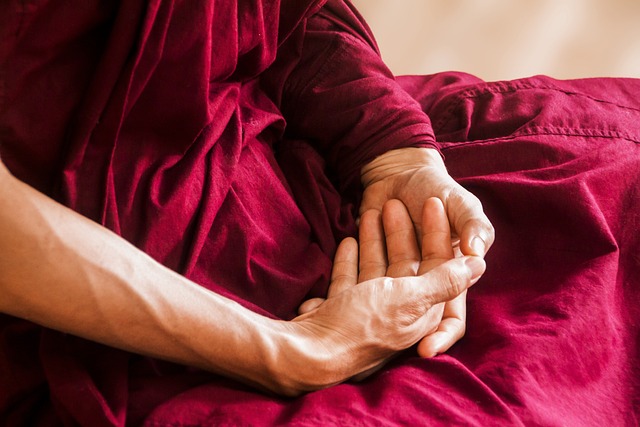
Meditation is a practice that has been around for thousands of years and has gained popularity in modern times as a way to reduce stress, increase focus and clarity, and promote overall well-being. There are many different types of meditation, each with its own unique benefits and techniques. In this article, we will explore some of the most popular types of meditation and how they can benefit you.
Concentrative Meditation
Concentrative types of meditation are techniques where the focus is on a single object such as a breath, a word, or a sound. The goal is to develop a greater sense of concentration and inner awareness, which can lead to a deeper state of relaxation and calmness.
Benefits of concentrative meditation
Concentrative meditation techniques have many benefits for both your physical and mental health. Some of the key benefits include:
- Reducing stress and anxiety.
- Increasing concentration and focus.
- Improving emotional stability and wellbeing.
- Promoting better sleep.
- Boosting immune system function.
- Enhancing overall sense of wellbeing and happiness.
Techniques
1. Mindfulness meditation – This technique involves focusing on the present moment and observing your thoughts and feelings without judgment. As you practice mindfulness, you become more aware of your thoughts and emotions, enabling you to manage them more effectively.
2. Breath awareness meditation – This technique involves focusing on your breath as a way to calm your mind and body. As you focus on your breath, you become more aware of your body’s sensations, which can help you to reduce stress and anxiety.

3. Loving-kindness meditation – This technique involves consciously cultivating feelings of kindness and compassion towards yourself and others. During this practice, you focus on generating positive emotions such as love, happiness, and joy.
Mindfulness-based Meditation
Mindfulness-based types of meditation emphasize the practice of being fully present in the moment, non-judgmentally observing one’s thoughts, sensations, and emotions. It involves cultivating mindfulness– a heightened sense of awareness and acceptance of the present moment experience.
Benefits of mindfulness-based meditation
Mindfulness-based meditation techniques offer various benefits, including:
- stress reduction
- increased self-awareness
- improved focus
- enhanced emotional regulation.
These types of meditation can be practiced individually or as part of a structured mindfulness program, such as Mindfulness-Based Stress Reduction (MBSR) or Mindfulness-Based Cognitive Therapy (MBCT). Incorporating these techniques into daily life can lead to greater well-being and a more mindful approach to various activities.
Techniques
1. Body scan meditation- The technique involves directing attention to various parts of the body, from head to toe, in order to bring awareness to bodily sensations and promote relaxation. Practitioners mentally scan each body part, observing tensions or sensations that arise without judgment. This technique helps develop a deep connection with the body and enhances body-mind awareness.

2. Walking meditation- This mindfulness practice that involves walking slowly and intentionally while maintaining awareness of the body’s movements and sensations. Practitioners focus on the sensations of each step, such as the feeling of the feet touching the ground or the rhythm of the breath. Walking meditation can be performed indoors or outdoors, providing an opportunity to combine mindfulness with physical activity.
3. Eating meditation- Also known as mindful eating, involves bringing full attention and awareness to the act of eating. It involves slowing down the eating process, savoring each bite, and observing the tastes, textures, and smells of the food. Practitioners pay close attention to the physical sensations and the experience of eating, without judgment or distraction. Eating meditation promotes mindful consumption, gratitude, and a deeper connection with food.
Movement-Based Meditation
Movement-based types of meditation refer to the practice of incorporating physical movement and mindfulness to cultivate a meditative state of awareness. It combines the benefits of movement and mindfulness, allowing practitioners to engage both their bodies and minds in the meditative process.
Techniques
1. Yoga meditation- Yoga meditation involves a combination of physical postures (asanas), breath control (pranayama), and meditation techniques. It integrates movement, breath, and focused attention to promote relaxation, flexibility, strength, and inner stillness. Through the practice of yoga meditation, individuals can enhance their mind-body connection and develop a deeper sense of self-awareness.
2. Tai Chi and Qigong- Tai Chi and Qigong are ancient Chinese practices that combine slow, flowing movements, deep breathing, and focused attention. These practices aim to balance the flow of vital energy (qi) in the body, promote relaxation, and cultivate a sense of inner calm and harmony. Tai Chi and Qigong incorporate meditative elements through their mindful movements, encouraging practitioners to be fully present in each movement and cultivate a state of meditation in motion.
3. Dance and ecstatic meditation- Dance and ecstatic meditation involve using dance, rhythmic movement, and music to enter into a meditative state. These practices emphasize free-flowing movements, allowing individuals to express themselves and connect with their bodies and emotions. Dance meditation can range from structured forms, such as 5Rhythms or ecstatic dance, to spontaneous and intuitive movement. Through dance and ecstatic meditation, individuals can release tension, access inner creativity, and experience a sense of liberation and joy.
Movement-based meditation techniques offer a unique pathway to meditation, as they engage the body’s physicality and kinesthetic awareness. They can be practiced individually or in group settings, providing opportunities for self-expression, exploration, and personal growth. Incorporating movement-based meditation into one’s routine can promote physical well-being, emotional balance, and a deeper connection with the present moment.
Visualization-Based Meditation
Visualization-based types of meditation involve using the power of imagination and mental imagery to create a meditative experience. It relies on the mind’s ability to visualize and visualize specific images, scenes, or concepts to enhance relaxation, focus, and self-awareness.

By engaging the senses and imagination, practitioners can access deeper levels of consciousness and inner exploration.
Benefits of visualization-based meditation
Visualization-based meditation techniques offer a powerful tool for self-exploration, manifestation, and mental well-being. They tap into the mind’s creative potential and imagination, allowing individuals to access deeper states of consciousness and influence their thoughts, emotions, and experiences. Practicing visualization-based meditation can support personal growth, positive mindset development, and the manifestation of goals and intentions.
Techniques
1. Guided imagery meditation- Guided imagery meditation is a technique that involves following verbal instructions or recorded scripts to create vivid mental images. Practitioners are guided through a specific scenario, such as a peaceful natural setting or a healing journey, encouraging them to visualize and immerse themselves in the imagery. This technique promotes relaxation, stress reduction, and emotional well-being by harnessing the mind’s capacity to create and experience positive visualizations.
2. Chakra meditation- Chakra meditation focuses on the body’s energy centers, known as chakras, which are believed to correspond to different aspects of our physical, emotional, and spiritual well-being. During chakra meditation, practitioners visualize each chakra as a spinning wheel or sphere of vibrant energy, and they concentrate their attention on each chakra individually. This technique aims to balance and harmonize the chakras, promoting energetic flow and overall wellness.
3. Creative visualization- Creative visualization involves intentionally visualizing desired outcomes or goals. Practitioners create mental images of what they want to manifest or achieve, incorporating sensory details and emotions. By repeatedly visualizing their desired outcomes with clarity and belief, individuals aim to enhance motivation, focus, and the subconscious mind’s ability to attract and create their desired reality.
Mantra-Based Meditation
Mantra-based types of meditation involves the repetition of a specific word, phrase, or sound, known as a mantra, to focus the mind and enter into a meditative state. The mantra serves as a point of concentration, helping to quiet the mind, reduce distractions.

It also deepen one’s awareness of the present moment. Mantra-based meditation has been practiced for centuries in various spiritual and contemplative traditions.
Benefits of mantra-based meditation
Mantra-based meditation techniques provide a focal point for the mind, promoting concentration, relaxation, and inner exploration. By repeating a mantra, practitioners can quiet the chatter of the mind and access deeper states of consciousness. These techniques can be practiced by individuals of various belief systems and can be integrated into daily life to enhance overall well-being and spiritual growth.
Techniques
1. Transcendental meditation (mantra-based variant)– Transcendental Meditation (TM) is a widely known form of mantra-based meditation. In TM, practitioners are given a personal mantra by a certified teacher. The mantra is a Sanskrit sound or word that is repeated silently in the mind during meditation. The repetition of the mantra helps to settle the mind and transcend ordinary thinking, leading to a state of deep relaxation and inner stillness.
2. Primordial sound meditation– Primordial sound meditation is a technique derived from the ancient Vedic traditions of India. In this practice, individuals are given a specific personalized mantra based on the vibrations of the universe at the time of their birth. The mantra is repeated silently during meditation, allowing practitioners to attune themselves to the cosmic rhythm and experience a sense of unity and connection.
3. Kundalini meditation– Kundalini meditation incorporates specific mantras, breathing techniques, and movement to awaken the sleeping spiritual energy referred to as Kundalini. Chanting mantras, such as “Sat Nam” or “Wahe Guru,” along with rhythmic breathing, helps to raise the energy from the spine’s base through the chakras, leading to enhanced awareness and spiritual awakening.
Overall, there are many different types of meditation to choose from, and each one can provide its own unique benefits. Whether you are looking to reduce stress, increase focus and concentration, or promote overall well-being, there is a type of meditation that can help you achieve your goals. So take some time to explore and find the type of meditation that works best for you.
